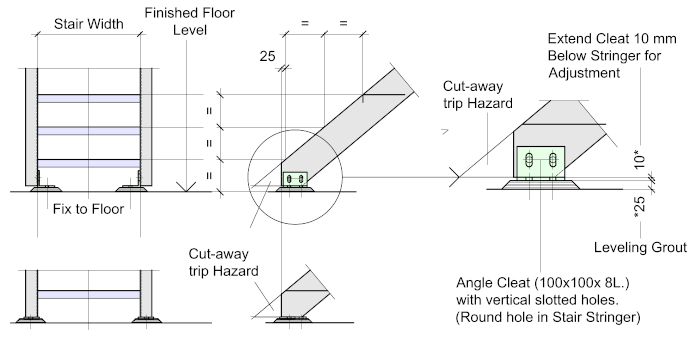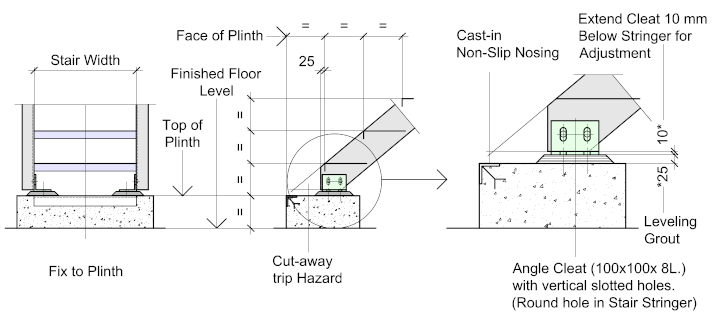Connecting to a Concrete Floor – Direct-Fixing
When connecting to a ground floor, which in most instances would represent the first flight, the stair may be connected directly to the floor. The connection should be somewhat flexible using an adjustable bolted cleat with vertical slotted holes to make up any difference in elevations, the cleat should extend approximately 10 mm below the stringer to allow for the adjustment. A 25-mm levelling grout should be allowed for beneath the stair base.
A base-plate may be used instead of the cleat, but though it’s simpler and less costly to fabricate, it reduces the ability to adjust the stair after erection.
The angle-cleat should be bolted to the inside web of the stringer – This provides easy access for fastening the anchor bolts and is out of the way, eliminating any potential trip hazard.

It’s also good practice to crop the end of the stair stringer approximately 25 mm from the nose of the first stair tread to eliminate any potential trip hazard.
It’s generally not necessary to cast-in holding down bolts for such applications, a cast pocket and rag-bolt will usually suffice, or alternatively a drill a hole in the concrete floor, using the base angle as a template, and fasten with a chemical anchor.
Connecting to a Concrete Floor – Concrete Plinth
When connecting the base of the stair to a concrete plinth, it may be either individual plinths under the stringer bases or one single plinth extending the full width of the stair.
The full-width plinth should be designed so that its height is equal to the first riser, the face of the plinth, in turn, will be equal to the ‘going’ of the stair. A non-slip nosing should be cast into the leading edge
A 25-mm levelling grout should be allowed for beneath the stair base

The plinth may be cast after the stair has been positioned – in which case, Anchor Bolts could be set in position using the stair base as a template.
Alternatively, the plinth could be cast in advance of the stair being installed, using rag-bolts in pockets, or drilled for chemical anchors.
The plinth is usually held to the concrete floor using reinforcement starter bars.
